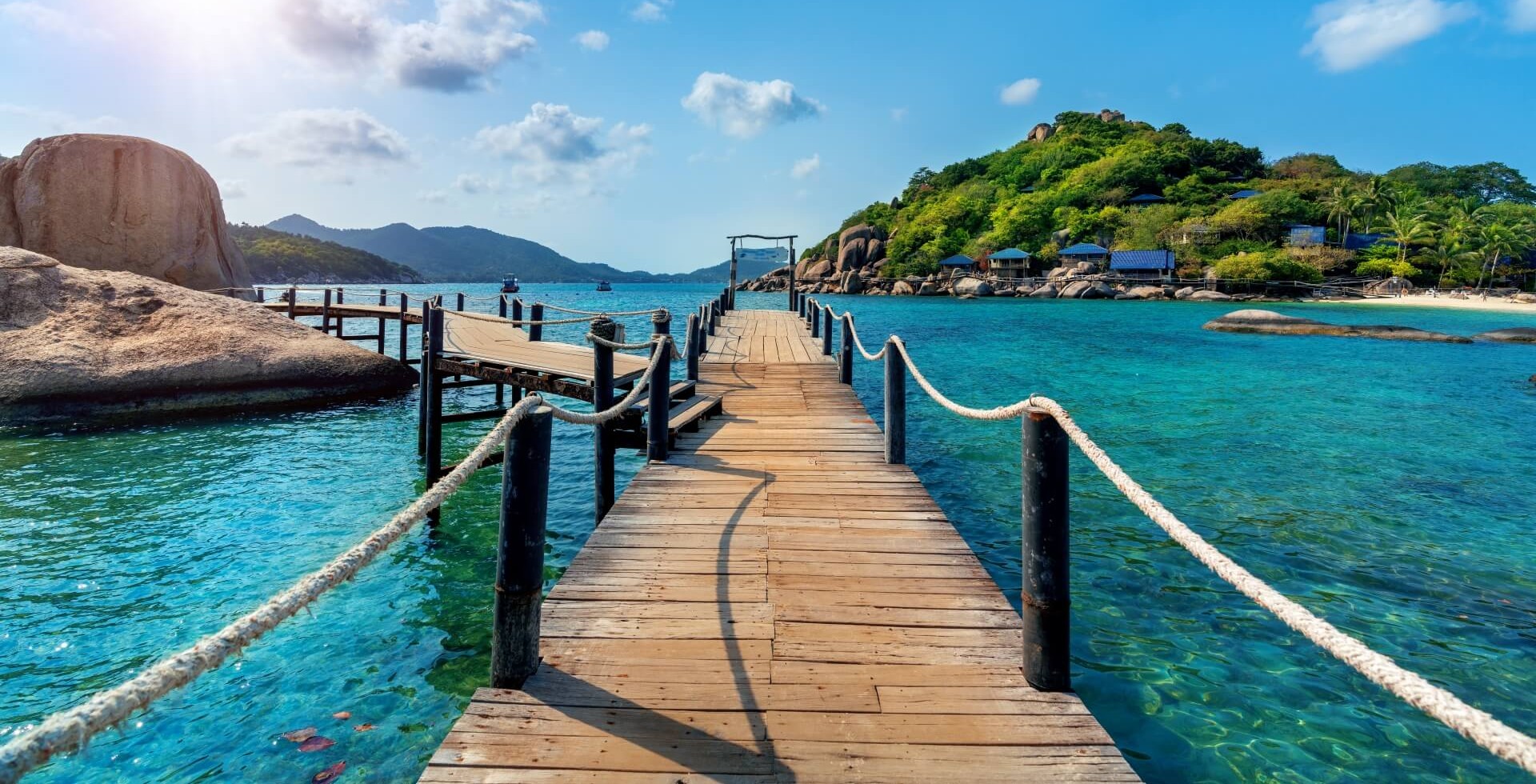Marketing, including travel marketing, is a consistently evolving industry. However, one thing that never changes is the value of storytelling in your travel marketing and other promotional campaigns.
In this article, we’ll take a closer look at storytelling and digital storytelling as a tourism marketing tool. We’ll also discuss the benefits of this technique, and how to make it an effective tool for your specific use.
What is storytelling in travel marketing?
When we talk about storytelling in marketing, we’re talking about the ability to craft a compelling narrative about the brand. The ability to craft a compelling narrative and incorporate it into your work in a way that makes sense is an essential part of modern travel marketing.
Examples of storytelling in travel marketing
It can be a bit difficult to see how storytelling and marketing come together, but they’re interconnected. Let’s discuss a few examples of storytelling in the tourism and travel marketing industries.
- An eco-friendly accommodation brand that shares the stories of some of their past clients, highlighting how they had a wonderful adventure without harming the environment.
- Videos and series that go along on the journey of fictional characters experiencing the features and amenities that a travel brand has to offer.
In essence, storytelling in the marketing sphere is incredibly fluid. It can take the form of advertisements travelling along with a moment in a family’s journey, or it may be as simple as providing additional background for a person or element in a marketing campaign.
In marketing, as in life, storytelling is everywhere and reflects life. That is the main thrust of storytelling in travel marketing: telling a relatable story that reflects the lives or desires of your target audience.
Benefits of using storytelling in your travel marketing

There are a range of different advantages to using storytelling as part of your travel marketing. Some of these benefits include the following:
Creating an emotional connection:
The most noteworthy benefit of using storytelling in a marketing strategy is that it can help you to connect with your audience. Emotionally-laden stories may resonate deeply with your potential customers,encouraging them to remember a specific destination or activity..
By using compelling stories, you can help potential travellers to put themselves in the shoes of someone using your service or product. This can help them to form a sense of connection, and make them more willing to try it themselves.
Enhancing your brand’s identity:
Another significant advantage of storytelling as a travel marketing technique is that it can help you form a strong brand voice. By using unique storytelling and imagery, your brand stands out from other brands in the travel marketing niche, leaving potential customers with memorable impressions of who you are and what you do.
Inspiring wanderlust:
Sometimes, storytelling is the one thing that can inspire travellers to dream about the holiday they most want to go on. This can be the turning point that inspires their wanderlust and helps them to make the leap from dreamer to doer.
The main reason why storytelling is so effective at this is that it helps people to truly envision the possibilities, and place themselves in the picture of the story.
Providing valuable information:
Not all people learn by reading. Some people take in information best when they can see and experience it. Visual storytelling is an excellent way to provide an immersive experience that helps people grasp the finer details and information through a more interactive medium.
Using visual storytelling in travel marketing also allows you to provide your target audience with unique insider tips and recommendations.
Improving SEO and engagement:
When it comes down to it, travel marketing intends to reach as many different people as possible. You want to get in touch with anyone and everyone who may be interested in paying for your products.
Immersive storytelling significantly improves your chances of people sharing your marketing materials. This is especially true with modern social media marketing techniques. Storytelling also gives you a great way to unobtrusively incorporate current buzzwords and keywords.
Between the high engagement levels and the marketing SEO benefits, you’ll see excellent results.
Essential elements of good storytelling in digital travel marketing

When you’re using storytelling for travel marketing, there are a few essential elements that you need to bear in mind. Below, we’ll take a closer look at some of the most essential elements and how they can bring your travel marketing campaigns to the fore.
Understanding your audience
The first key to using travel and destination storytelling in your travel marketing is to understand your target audience. While it is certainly possible to create a sort of general story and hope for the best, it’s unlikely to be as successful as a carefully tailored narrative.
If your target audience is eco-friendly tourists, for instance, your narrative needs to revolve around how eco-conscious the brand is. On the other hand, if you’re targeting families with children, your narrative needs to revolve more around inclusivity and people of all ages.
For this reason, it’s essential to do research and find out as much as possible about your target audience. A great place to start is with the traffic you’re already getting on your website and social media accounts. Tools like Google Analytics and its social media analytics tools are an excellent way to help you determine things like:
- How old your average target audience is.
- Which kinds of storytelling appeal to different segments of your target audience?
- Where most of your audience is located, geographically.
- Trends in the interests and professions of your audience.
The more information you have about your audience and its preferences, the more likely your narrative is to be successful. Try it, you’ll see results soon enough.
Choosing the right platforms
Even when you’re running the best immersive narratives that your industry has ever seen, they’ll do you no good if you’re running them on platforms that your target audience doesn’t prefer. If you’re doing niche marketing and your audience prefers Instagram, for instance, running a TikTok promotion is unlikely to be successful.
Beyond that, even with an audience that utilises a diverse array of platforms, different platforms have different strengths and weaknesses. YouTube is a fantastic platform for running long-form content, for example. Instagram is a lot better for short-form content, and TikTok is the ideal choice for fun and quirky content.
Depending on the type of storytelling campaign you want to run, you need to choose your platform carefully.
Crafting compelling narratives
When using storytelling for travel marketing, it’s vital to create a carefully-structured and compelling narrative. Without structure, a storyline can quickly fall apart or become confusing. It also needs to engage the audience, helping them to feel like they’re there (or would like to be), or invoking empathy for the character in the marketing narrative.
For this, you can either script a unique and relevant narrative of your own, or you can turn to old favourites like “the hero’s journey” or “the transformational journey.” These are two different narratives featuring a character who goes out and either conquers something or changes significantly.
Some significant factors here are:
- Diversity: It’s important to create a diverse array of characters throughout your storytelling and travel marketing campaigns. Doing so will help promote a sense of inclusiveness.
- Authenticity: A narrative is most compelling when it is based on authentic travel experiences and viewers or readers can relate to it. It’s easy to turn a travel marketing campaign into something generic by not being authentic and leaning on your brand voice and identity.
- CTAs: No matter how compelling your story is, you need to let your audience know what you want them to do. Clear, concise calls-to-action help to convey this, and help to convert a compelling narrative into good sales.
Using visuals effectively

One of the ways in which you can make your storytelling and travel marketing more effective is to use high-quality visuals. Many different brands don’t pay enough attention to the quality of the visuals they’re using.
You also need to ensure that the visuals you choose are appropriate and relevant. There are so many different types of visuals to choose from today, that you have almost infinite options. Some of them include things like drone shots, street scenes, and character portraits.
In the travel marketing industry, one excellent way to make your visuals more compelling is to get video footage and photos from the different locations you serve. Ensure that you include some of the more compelling, unusual, and lesser-known areas for the best effect.
Interactive and immersive content
When you’re using storytelling for marketing purposes, the whole idea is to draw people in, to immerse them in the story. The more interactive and immersive the story is, the more compelling your audience is likely to find it. Some of the ways you can accomplish this include the following:
Incorporating sensory details
The most important thing when building an interactive or immersive storytelling experience is to incorporate as many of the different senses as possible. Here are a few examples:
- Sight: Use appropriate colours, shapes, and textures.
- Sound: Use environmental ambience, music, and other sounds.
- Taste: Describe the flavours and aromas of food or drinks.
- Smell: Evoke the scents of the environment or characters.
Encouraging participation
It’s always a good idea to use your storytelling as a way to engage with your audience. Some ways to do this include the following:
- Asking questions: Ask questions throughout the story to engage the audience and encourage active participation.
- Games: Incorporate interactive elements like quizzes, polls, or games.
- Social media platforms: Use social media to encourage discussion and interaction around the story.
Leveraging technology
There are many different ways for you to leverage technology to make your storytelling more compelling. Some of the possible options include the following:
- Virtual reality: Create immersive experiences using VR technology.
- Augmented reality: Enhance the real world with digital elements.
- Interactive content: Develop interactive content like quizzes, polls, or simulations.
Measuring success
Though it may not seem like it, keeping track of your narratives and the kind of results they bring is also essential to the overall picture. Keeping careful track of analytics and results allows you to understand what kind of narratives appeal to different parts of your audience.
It also allows you to do careful testing so you can determine how to improve your narratives and storytelling in the future.
Conclusion
As you can see, storytelling and travel marketing go hand-in-hand. From building rapport with your target audience to providing an immersive experience that helps them feel more connected to your travel offerings, the advantages are endless.
Don’t miss out on the opportunity to use travel marketing and storytelling together for the best possible results. And if you’re not sure which story your brand ought to be telling, Boost Brands is here to help. Feel free to contact us for expert insight on storytelling and marketing for your brand.




